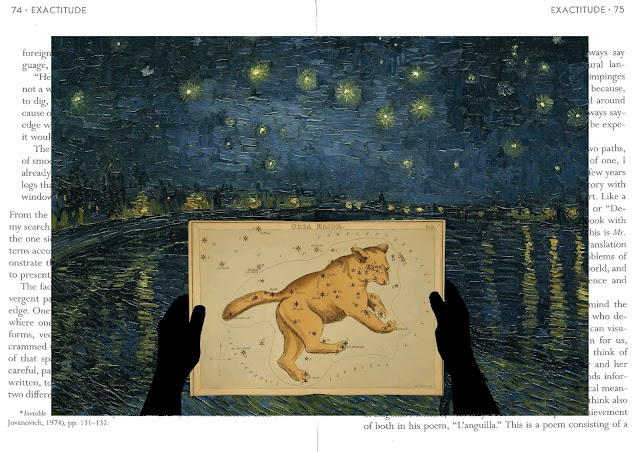American Lessons by Italo Calvino,
Artwork by Rachele Ciresola
The American Lessons are part of a cycle of lectures prepared by Italo Calvino for Harvard University. There were six planned themes: Lightness, Quickness, Exactitude, Visibility, Multiplicity, Consistency. Although the last lesson was not completed, it is represented as a common thread in the five representations.
LIGHTNESS - The value of lightness cannot be understood without considering its opposite, heaviness. But it is precisely in expressing the value of lightness, through ideas, words, concepts, that we attribute to this element its opposite connotation.
Reference: René Magritte, La bataille de l’Argonne, 1959
QUICKNESS - Quickness is not intended as velocity, but as the contrast between two times: real time and mental time. Thus, in modern society where everything flows quickly and frantically, mental velocity assumes a universal value, capable of bringing enjoyment to the human soul.
Reference: Edward Hopper, Compartment C Car, 1938
VISIBILITY - Visibility is the set of all possible ways to visualize the same basic concept. Consider the literary example of Romeo and Juliet: the concept is associated with a series of particular representations that over time have become part of the common imagination. The association is particular and different for each thinking subject.
References: Francesco Hayez, The kiss, 1859
Francesco Hayez, Last kiss for Julia from Romeo, 1823
Frank Dicksee, Romeo and Juliet, 1884
Julius Kronberg, Romeo and Juliet on the balcony, 1886
MULTIPLICITY - If multiplicity is the set of all possible relationships, in act and in power, that exist between things, then it is precisely through all the means available to man that the concept of multiplicity takes shape, through the interconnection of all the relationships that can be created.
Reference: Vassily Kandinsky, Several Circles, 1926
Reference: Vincent van Gogh, Starry Night over the Rhone, 1888





Comments